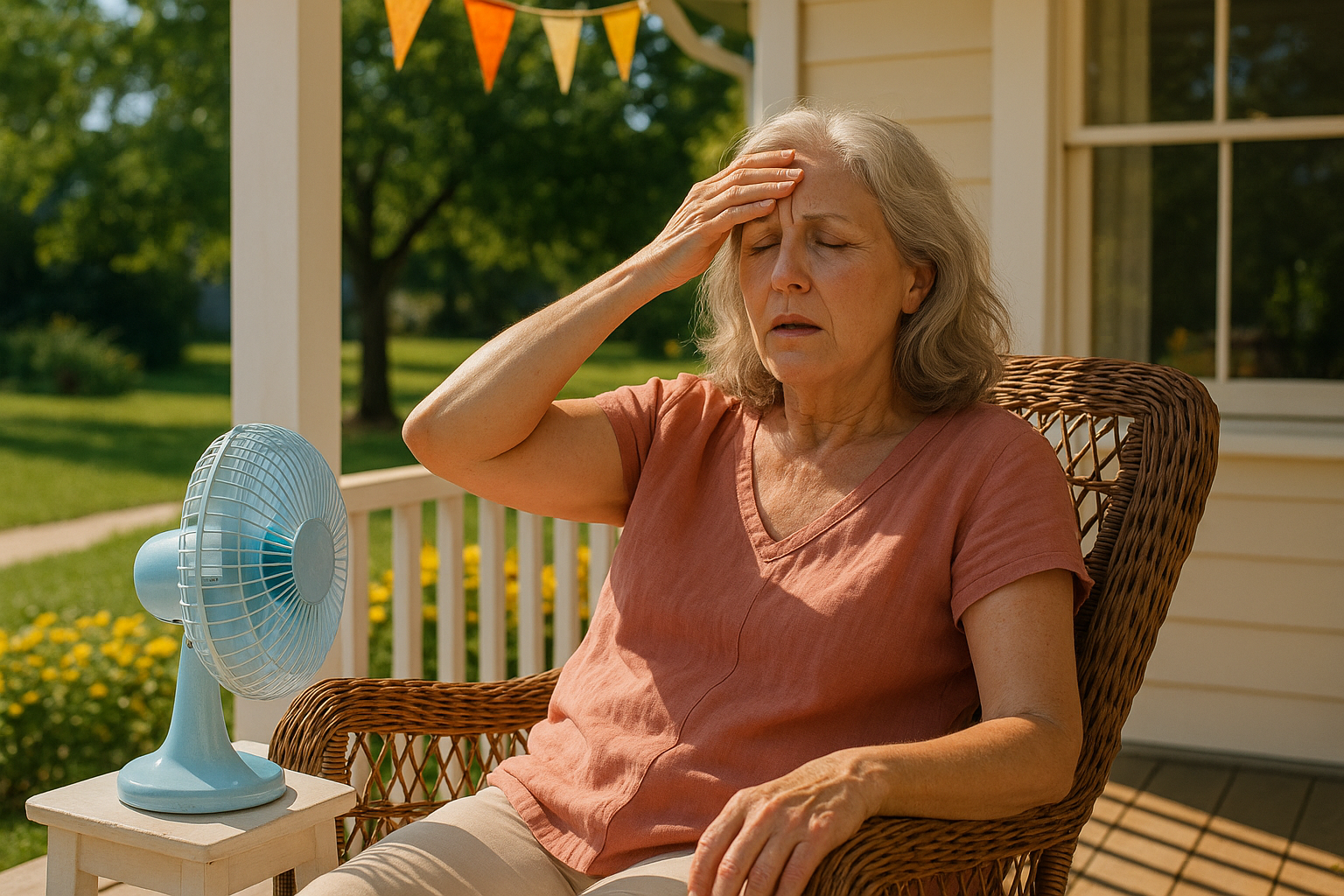Pelvic organ prolapse (POP) is hard enough to manage on a regular day, but when the temperature rises and summer kicks into full gear, many women report their symptoms getting worse.
That heavy, dragging sensation shows up faster.
Swelling becomes more noticeable.
And just walking across a parking lot feels like gravity’s pulling more than just your energy.
But it’s not all in your head, there are real biological and lifestyle reasons why prolapse can feel worse during summer.
Here’s the breakdown, backed by science, expert advice, and practical tips to help you stay cool and supported.

1. Heat Increases Swelling and Pelvic Pressure
Think of your body as a sponge.
When it’s hot outside, your blood vessels expand (vasodilation) to release heat.
But this also draws more fluid into the tissues, yep, including your pelvic region.
More fluid = more swelling = more pressure.
“Hot weather can cause pelvic congestion,” says Dr. Jessica Drummond, a clinical nutritionist and pelvic health expert. “When the tissues in the pelvis are already compromised due to prolapse, any increase in vascular pressure can worsen the heaviness or bulging sensation.”
In a study published in Clinical Hemorheology and Microcirculation, researchers found that heat significantly increases venous pooling, a fancy term for blood collecting in the lower half of the body, already a challenge for many women with pelvic floor dysfunction.

How to ease it?
Sleeping with leg elevation can reduce pressure build-up.
The Prolapse Pressure Relief Pillow, designed to rest between the thighs, gently realigns the pelvis and helps ease that downward pull, especially helpful during hot, swollen nights.

2. Dehydration Leads to Constipation — A Top Prolapse Trigger
In summer, we sweat more, lose water faster, and often forget to replenish it.
Unfortunately, dehydration is a major trigger for constipation, and that’s one of prolapse’s biggest bullies.
Straining on the toilet puts direct pressure on the pelvic organs and stretches the pelvic floor.
Over time, that can worsen your symptoms and even cause progression.
A study in the International Urogynecology Journal found that women with chronic constipation were significantly more likely to experience pelvic organ prolapse than those with regular bowel habits.
“Hydration is essential—not just for comfort but for pelvic floor integrity,” explains Dr. Amy Stein, DPT. “Constipation and straining are silent saboteurs when it comes to prolapse management.”
 What helps:
What helps:
In addition to fiber and hydration, adding a soothing herbal practice like yoni steaming can promote pelvic blood flow and reduce tension.
The Herbal Blend includes mugwort, motherwort, and red rose petals, commonly used for relaxation and gentle pelvic support after stressful bowel episodes.

3. Summer Activities = More Standing, Lifting, and Walking
Summer is great for getting out and about, until your pelvic floor starts waving the white flag.
Whether it’s standing at a BBQ, walking long distances on vacation, or hauling beach gear, physical exertion and prolonged standing can crank up pelvic pressure.
In a 2021 review in Women’s Health Reports, researchers noted that increased intra-abdominal pressure from lifting, standing, or even brisk walking can trigger prolapse flare-ups.
“We often forget that standing for long hours is a strain just as much as lifting weights,” says pelvic health physiotherapist Michelle Lyons. “For women with prolapse, even joyful movement needs pacing.”
 4. Tight Shorts, Wet Swimsuits, and Heat Rashes—Oh My
4. Tight Shorts, Wet Swimsuits, and Heat Rashes—Oh My
Let’s talk fashion. Summer wardrobes often mean tight shorts, synthetic undies, and wet swimsuits, and all of these trap heat, friction, and moisture.
For women with prolapse (where tissue may be exposed or inflamed), that combo?
An itchy, sweaty recipe for misery.
Warm, damp environments also increase the risk of yeast or bacterial infections, which can worsen prolapse discomfort with new symptoms like burning or swelling.
“Avoid anything that traps heat and moisture,” warns Dr. Bri Grogan, DPT. “Opt for cotton underwear, loose skirts, and take your swimsuit off as soon as you're out of the water.”
 The fix: Swap synthetic panties for breathable, moisture-wicking Leak-Proof Underwear. These look and feel like regular undies, but they absorb leaks discreetly and help you stay dry when the weather—and your body—aren’t cooperating.
The fix: Swap synthetic panties for breathable, moisture-wicking Leak-Proof Underwear. These look and feel like regular undies, but they absorb leaks discreetly and help you stay dry when the weather—and your body—aren’t cooperating.
5. Travel Challenges: The Unseen Prolapse Aggravators
Summer = vacations. And while relaxing, travel can be a minefield for prolapse:
-
Long hours sitting in a car or plane? Reduces circulation.
-
Hotel beds with hard or unsupportive mattresses? Throws off your pelvic alignment.
-
Skipping routines like pelvic exercises or herbal care? Leads to flare-ups.
“It’s about working smarter, not harder,” says Dr. Heather Jeffcoat, DPT. “Even small adjustments help reduce flare-ups.”
 So, What Can You Do?
So, What Can You Do?
Here’s your Pelvic-Smart Summer Checklist:
💦 Drink 2–3L of water daily (even if it means more bathroom trips)
🍉 Eat fiber-rich snacks to stay regular
🌬️ Wear loose, cotton-based clothing
🛌 Use a leg-elevating pillow to ease nighttime pressure
🧸 Sit or lie down when possible, don’t let gravity win all day
✈️ Travel smart with support gear and soothing recovery rituals
☘️ Add a steam ritual after long days or travel to relax and reset
Final Words
If summer has you feeling more “ugh” than “ahhh”, you’re not imagining it.
Heat, dehydration, movement, and irritation can all stack up against your pelvic floor.
But with the right tools, and smart pacing, you can enjoy the sunshine without your symptoms stealing the spotlight.
Because rest? That’s hot too.





Share:
Collagen and Pelvic Health: What the Science Says
Steaming, Stretching, Sleeping: My Weekly Reset for a Stronger Pelvic Floor